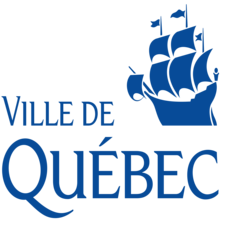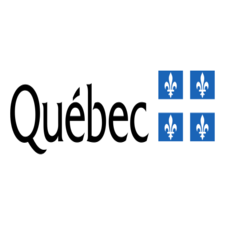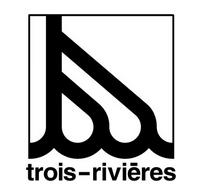RI_536
Type of resources
Available actions
Topics
Keywords
Contact for the resource
Provided by
Formats
Representation types
Update frequencies
status
Scale
-

Map of Quebec City railways.**This third party metadata element was translated using an automated translation tool (Amazon Translate).**
-

The Hydrogeological Information System (HIS) contains the physical characteristics of wells and boreholes (location, depth, stratigraphy encountered, etc.) mainly from drilling reports transmitted by well drillers for groundwater sampling installations serving private drinking water residences. The geographic coverage corresponds to all of Quebec although most of the data are found in the south of the province. A monthly update is made. SIH data can be useful for hydrogeology professionals, the academic community and a wider audience in order to make interpretations on portions of territory, for example on the depth of the rock in a sector, or to consult more precise points of information such as the description of a specific identified well.**This third party metadata element was translated using an automated translation tool (Amazon Translate).**
-
Layers of areas where biting insects are treated**This third party metadata element was translated using an automated translation tool (Amazon Translate).**
-

Position of address points. **Collection context** Initial source of the Qc address databases, the urban planning department, the engineering department and the DGE. Analysis and coupling of the various sources to create a comprehensive research layer for the needs of the city's internal users. Timely maintenance using the address change reports from the urban planning department and changes to the property records from the assessment department. **Collection method** Computer-aided mapping. **Attributes** * `ID_ADRCIV` (`integer`): Identifier * `NOCIVQ` (`integer`): Civic number * `NOCIV_SUFX` (`varchar`): Number suffix * `ODO_INDEX_LONG` (`varchar`): Long index odonym * `ODO_INDEX_COURT` (`varchar`): Short index odonym * `ADQNBUNITE` (`integer`): Number of Qc address units * `CODE_POST` (`varchar`): Postal code * `MAT10` (`varchar`): Number * `SOURCE` (`varchar`): Source * `DATE_CREATION` (`smalldatetime`): Created on * `DATE_MODIFICATION` (`smalldatetime`): Modified on * `USER_MODIFICATION` (`varchar`): Modified by * `DATE_ARCHIVE` (`smalldatetime`): Archive date * `ODO_LONG_COMPLETE` (`varchar`): Full long odonym * `ODO_COURT_COMPLET` (`varchar`): Full short odonym * `ODONYM` (`varchar`): Odonym * `LOC_X` (`numeric`): x * `LOC_Y` (`numeric`): y For more information, consult the metadata on the Isogeo catalog (OpenCatalog link).**This third party metadata element was translated using an automated translation tool (Amazon Translate).**
-

Polygons of evaluation units of the graphic matrix. **Collection context** Update process in collaboration with the evaluation department. **Collection method** Computer-aided mapping. **Attributes** * `ID` (`integer`): Identifier * `ADM01A` (`varchar`): Municipality code * `SI0318A` (`smalldatetime`): Registration date * `SI0317C` (`varchar`): Registration * `SI0528C` (`varchar`): Neighborhood unit * `DATE_CREATION` (`smalldatetime`): Created on * `DATE_MODIFICATION` (`smalldatetime`): Modified on * `USER_MODIFICATION` (`varchar`): Modified by * `X_FIC_JOINT` (`varchar`): Attached file * `ID_OLD` (`varchar`): Old id For more information, consult the metadata on the Isogeo catalog (OpenCatalog link).**This third party metadata element was translated using an automated translation tool (Amazon Translate).**
-

Point layer of the registration points (centroids) of the evaluation units of the graphic matrix. **Collection context** Update provided by the evaluator or evaluation department. **Collection method** Computer-aided mapping. **Attributes** * `ID` (`integer`): Identifier * `ADM01A` (`varchar`): Municipality code * `SI0317A` (`smalldatetime`): Registration date * `SI0317B` (`integer`): Representation scale * `SI0317C` (`varchar`): Registration * `SI0317D` (`varchar`): Location * `SI0102C` (`varchar`): Section * `SI0103C` (`varchar`): Division * `UNIT_V` (`varchar`): Neighborhood unit * `NOTES` (`varchar`): Notes * `DATE_CREATION` (`smalldatetime`): Creation date * `DATE_MODIFICATION` (`smalldatetime`): Date of modification * `USER_MODIFICATION` (`varchar`): Modified by For more information, consult the metadata on the Isogeo catalog (OpenCatalog link).**This third party metadata element was translated using an automated translation tool (Amazon Translate).**
-

Linear layer illustrating the lot divisions present in the graphic matrix in the case of properties containing several lots. **Collection context** Maintenance process in collaboration with the evaluation department. **Collection method** Computer-aided mapping. **Attributes** * `ID_MAT_DIV` (`integer`): Identifier * `DATE_CREATION` (`smalldatetime`): Created on * `DATE_MODIFICATION` (`smalldatetime`): Modified on * `USER_MODIFICATION` (`varchar`): Modified by * `MAT10` (`varchar`): ID number * `ID_MAT_DIV_OLD` (`varchar`): Old id For more information, consult the metadata on the Isogeo catalog (OpenCatalog link).**This third party metadata element was translated using an automated translation tool (Amazon Translate).**
-

Data table containing the odonyms of city streets. The names were checked with the Quebec Toponymy Commission. **Collection context** Periodic manual additions and changes. **Collection method** Notifications by city legal departments. **Attributes** * `ID_ODONYME` (`integer`): Odonymous identifier * `ODONYM` (`varchar`): Odonym * `GEN_ODO` (`varchar`): Generic odonym * `LINE_ODO` (`varchar`): Odonymous link * `GEN_COURT` (`varchar`): Short generic * `ODO_COURT` (`varchar`): Short odonym * `ACTIVE` (`integer`): Active * `OFFICIAL_STATUS` (`integer`): Official status * `NOTICES_DESC` (`varchar`): Descriptive notice * `OLD_NAME` (`varchar`): Old name * `DISTRICT` (`varchar`): Distrito * `USER_MODIFICATION` (`varchar`): Modified by * `DATE_CREATION` (`smalldatetime`): Creation date * `DATE_MODIFICATION` (`smalldatetime`): Date of modification * `DATE_OFFICIEL` (`smalldatetime`): Official date * `ODO_COURT_COMPLET` (`varchar`): Full short odonym * `ODO_LONG_COMPLETE` (`varchar`): Full long odonym * `ODO_INDEX_COURT` (`varchar`): Short index odonym * `ODO_INDEX_LONG` (`varchar`): Long index odonym For more information, consult the metadata on the Isogeo catalog (OpenCatalog link).**This third party metadata element was translated using an automated translation tool (Amazon Translate).**
-
Urbanization perimeters of the City of Trois-Rivières**This third party metadata element was translated using an automated translation tool (Amazon Translate).**
-
Layers of the development phases of the urban plan in the City of Trois-Rivières**This third party metadata element was translated using an automated translation tool (Amazon Translate).**
 Arctic SDI catalogue
Arctic SDI catalogue
